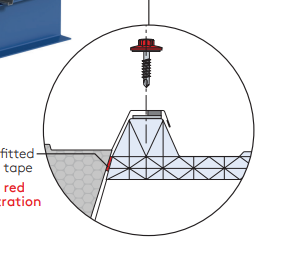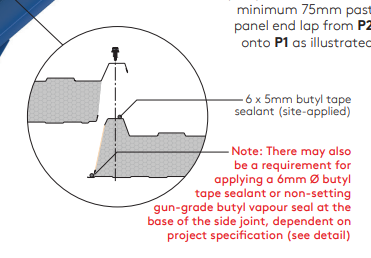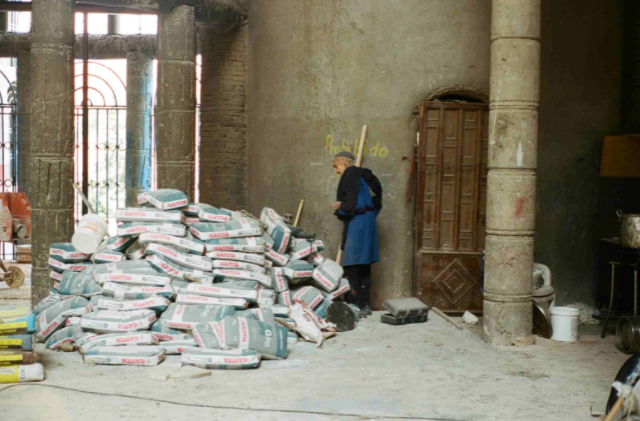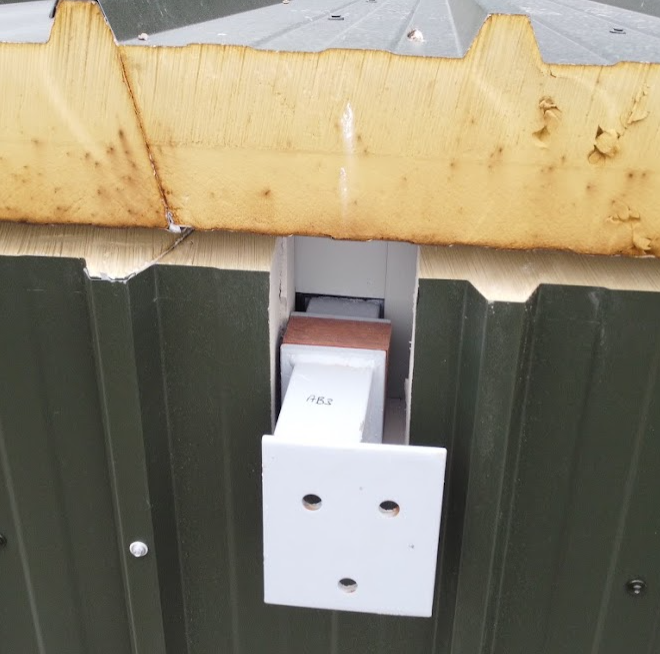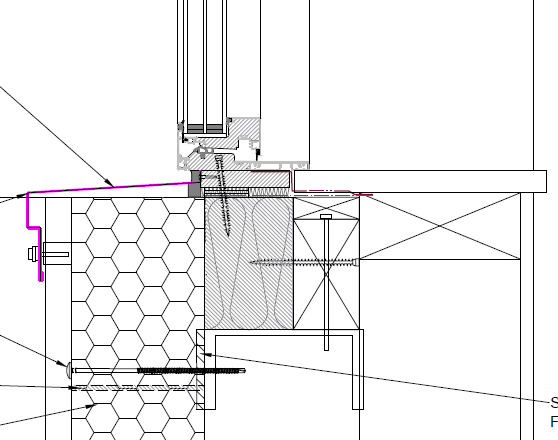-
Posts
140 -
Joined
-
Last visited
-
Days Won
1
kxi last won the day on January 10 2022
kxi had the most liked content!
Recent Profile Visitors
The recent visitors block is disabled and is not being shown to other users.
kxi's Achievements

Regular Member (4/5)
130
Reputation
-
https://www.kingspan.com/gb/en-gb/products/daylighting-systems/rooflight-systems/daylite-trapezoidal-rooflight-plus-ks1000-dltr-plu The ones we have (above link) are rated at 0.8W/m2k, which is as good as triple glazed windows marketed for passive house. However, given kingspan's track record, it's possible this rating is not true, or that the construction is vulnerable and so more liable to not perform. I guess so, but they use the same lapping with a seal as the metal panels, so if the skylights are a risk, so are all roof joints in this kind of cladding? These rooflights are very common in commercial and industrial buildings and it would be surprising if they were so fundamentally flawed that all these buildings were bound to fail early. It is true the plastic and sealant is UV exposed so more vulnerable over time than the metal panels. e.g. side lap (on thin version) end lap: Page 7 of the Kingspan installation guide for the KS1000RW panels shows how sealant can also be applied at the base of the panel side joint, as it was in our case. This provides our air and vapour seal on the panel inner face. I am concerned it's not going to be airtight enough, hence thinking about additional taping. https://www.kingspan.com/gb/en-gb/products/insulated-panel-systems/downloads/kingspan-quadcore-rw-trapezoidal-75mm-no-faws-roof
-
Does it also depend on what the internal stud walls sit on and the floor build up under that thing? I.e. If your stud walls are sat on a concrete slab with no insulation under it (because your insulation was going on top of slab under screed) then you've got a thermal bridge through the floor. Also raised at 'the other place': http://www.greenbuildingforum.co.uk/newforum/comments.php?DiscussionID=4254
-
Our panels have the internal seals inside the joint top and bottom which should keep it air & water tight (each end is also capped off, which now i think about it might not be done well). The cladder warned that IF the outer seal ever water leaked you don't want to trap anything inside them. Hence they sometimes omit the inner seal to allow the joint to drain out. My problem is the inner liner is the air barrier and I want it very airtight, so no way I could omit the seal, so it may just trap any leaks. I'm in two minds about whether we'll need to air tape / sealant it as well from the inside but hope not to. I guess in your case it might have been the outer sealant became brittle after 20 years and started to let in air? Hopefully someone will have come up with a good solution by the time mine starts to leak.
-
This is def worth noting. The panels are a 100% vapour barrier so if they are added as part of a multi-layer roof/wall build up (like in a house) you have to make sure the parts of the wall/roof inwards are very vapour open to allow drying inwards i.e. no poly sheets or foil-backed plasterboard etc as the moisture would get trapped. Topic for another day, but I've found that it's increasingly common for US buildings to be vapour closed on the outside and aim to dry inwards not outwards. Though if the panels are thick i.e. very insulating, and the building is airtight, then the metal inner liner shouldn't get cold and so condensation shouldn't be a problem (I'm hoping). Another source of mysterious leaks is apparantly if the sheets are laid in the summer the metal expands and bows the panels very slightly upwards. The panels are so strong that screwing them down doesn't remove the bow (and you'd strip the fixings if you tried too hard). When weather cools, the panels lie flat again and the fixings stand very slightly proud of the roof - just enough that the fixing hole is a water path straight through the panels. We had this in a couple of places with just a drip coming through. No problem to fix, someone just needs to tighten the fixings, but it's something you might not even notice if you covered up the roof from the underside before the weather turned cold, and then have a persistent hidden leak. So you shouldn't just swap them out in place of a regular roof without thinking carefully about what else might need to change, and the designer & installer has to be aware of the potential issues.
-
@CalvinHobbes Our building including roof is clad in standard KS1000RW Kingspan panels using 150mm quadcore insulation. https://www.kingspan.com/gb/en-gb/products/insulated-panel-systems/insulated-roof-panels/quadcore-trapezoidal-roof-panels-ks1000rw It is unusual for a house, but very common for other building types. There's another buildhubber who self-installed them on their dairy conversion roof. We don't live in it yet, but so far my quick summary: - Can be very insulating and is inherantly thermal bridge free, though you need to detail this at the edges to avoid the metal thermal bridge of the inner liner - In theory can be very airtight, but there are some issues getting this detailled right - Looks just like metal roofing i.e. very neat, and available in large range of colours, but likely not going to be accepted anywhere but rural I'd guess - Can easy drop in insulated plastic rooflights anywhere. These are not see though but allow you to have natural light wherever you like (subject to planning etc) https://www.kingspan.com/gb/en-gb/products/daylighting-systems/rooflight-systems/daylite-trapezoidal-rooflight-plus-ks1000-dltr-plu - A bit noisy in the rain it seems. If you had an additional layer underneath i.e. plasterboard ceiling, not sure how much this would attentuate this. Crossing our fingers on this one, but many people live in metal roofed houses, and rain noise is one of the sounds people play to help them sleep - Cost effective considering you get all the layers in one go - you get the whole roof build up for the same price (perhaps even cheaper) than a seperate metal roof - Fast to install and in theory fairly simple, but likely not something most builders have done (our cladding was done by firm that does loads of it) - Lightweight and partly self-supporting meaning you don't need as many purlins - Penetrations are tricky, but not impossible - Don't use them for walls (long story)
-
I've been naively scrabbling around this topic for a while and already have the envelope of a building mostly built, but the other day came across a new source of info with some surprises in, which made me wonder a) what else I've missed, b) how much of what I think I know about the topic is either wrong, outdated, or at least not the full story. Clearly buildhub is useful, but what are additional sources of moderately detailed information, up to date with recent building science? E.g. Building science corp https://www.buildingscience.com/ great stuff Green building forum http://greenbuildingforum.co.uk/newforum/ GBA https://www.greenbuildingadvisor.com/ Partly paywalled, but interesting insight into the US market - which is mainly timber frame and very experienced with it UK PH trust https://passivhaustrust.org.uk/guidance.php The technical guidance is especially useful, but doesn't cover everything. Passipedia & iPHA https://passipedia.org/start Limited info for non-members. Is anyone on the forum? Any good? ACEB knowledge base https://aecb.net/knowledgebase-archive/ (Membership required for most resources, never looked TBH) Country-specific passivhaus orgs: NZ https://passivehouse.nz/hpcd-handbook/ (This handbook is good) North US https://naphnetwork.org/ (never looked) Canada https://www.passivehousecanada.com/ (found a couple of things) Suppliers I'm wary of info from suppliers but a couple of recent US timber frame ones with seemingly good info: Hammer & hand https://hammerandhand.com/best-practices/manual/ 475 https://foursevenfive.com/
-
Great piece on Justo Gallego Martínez, who passed away 28-Nov-2021. https://hazlitt.net/longreads/sacrifice He was the Spanish former monk who built an entire cathedral over a 60 year period, mostly himself, with apparently almost no professional input. An incredible story. "His cathedral was full of half-baked ideas, trial and error and moments of brilliance. It was the inside of Justo’s head rendered in iron and cement."
-
- 1
-

-
TBH it's a red flag that this design was proposed as-is at all? Suggests the designer either isn't worried about massive cold bridges, or just didn't spot it? Had you specified that these kinds of things should be avoided? Where else might there be issues? For example what is the detail at the 'north' end of beam 4?
-
We've used armatherm structural thermal breaks in a variety of places, which like the Farrat are I think commonly used for steel balcony connections https://www.armatherm.co.uk/products/frr-structural-thermal-break-material/ They can provide bushings and washers as well Not expensive. I believe stainless steel bolts give reduced heat transfer. While I'm not a professional, even if I wasn't concerned about heat transfer I wouldn't want any structural steel running through the envelope on a building intended to last 100+ years. What if the outer end gets wet and rusts? Wouldn't want to have to replace the entire beam. In that, I'd want the balcony to be replaceable independently of the main structure. We don't have any balconies, but we have an awning bracket which is similar. The stuff that looks like wood is the armatherm FRR:
-
If not already included, according to our SAP assessor, 2.5 kWp of PV would add 4 SAP points. Your SAP report may have included suggestions of simplest ways to get more points? (But PV almost certainly the simplest and cheapest)
-
One angle your consultant might consider as part of a full PP application is citing the potential for Class Q as a future material consideration in any full PP application. I.e. if farm has used PD in 2016, Class Q should be available again in 2026. As such the planning dept can likely expect an application from someone then for a Class Q conversion, potentially covering multiple barns on the plot. The availability of Class Q is a 'material consideration' when considering PP i.e. a planning dept should explicitly consider this as a factor when considering the full PP. The idea is you argue that your full PP application is in some way 'better' than what might be achieved under Class Q. In your case, even though Class Q isn't available now - it will be in future (assuming legislation doesn't change). Class Q as a 'fallback position' I suspect is / will / should become a common planning consultant approach in mitigating the issues with Class Q. I.e. Class Q encourages difficult and often unsatisfactory conversions, and using it as a fallback position to aid a 'better' full PP application seems like a good idea. One might apply this approach to any of the class Q conversions flagged on buildhub @adamr7747 ? See the Mansell appeal 2017: https://www.michelmores.com/news-views/news/planning-potential-improve-class-q-consent I don't know to what extent this approach has been tested again legally, but your planning consultant would know.
-
This sounds like it needs a patent pending ASAP.
-
Fair enough. For various reasons we can't support much weight off the sides, and while in principle the support along the bottom need not be continuous (e.g. could have 3 blocks of perinsul and fill in the gaps between with foam blocks) the way the whole thing has been designed requires an insulating & structural block under the whole window frame, which then has things screwed into it and airtightness tape attached. The insulating / structural block is shaded. TBH I never really looked at this detail until now, hence the question. Also now obvious that perinsul won't work here since it can't take a screw, and I wonder perhaps armatherm can't either.
-
What were the reasons for rejections though? And on what basis did the planning consultant think it would be easier to get full PP on the same site? Naively I'd have thought if the planners are finding ways to deny a class Q (which you could make look like whatever they like), then they would not be minded to grant full planning? In an ideal world yes as @Gus Potter says it would make more sense in almost every way if you knocked down and started again, but the planning environment usually prevents this. Does the consultant know that the local planners are actually in favour of this enlightened approach?
-
@PeterW Did you try painting over the top? Just noticed the official webpage says: 'Can be over coated with water borne, non-flammable varnishes and wood stains if a decorative or protective finish is required. Please test on a small area before treating the complete surface to ensure you are satisfied with the result' (Does not mention 'paint' by name) https://www.zeroflame.co/products/Fire-Retardant-Treatment Rawlins does say 'paint' though: 'Can be overcoated for decorative purposes with waterborne, non-flammable paints' https://www.rawlinspaints.com/home/fire-retardant-paints/timber-plasterboard/128-zeroflame-fire-retardant-treatment.html


